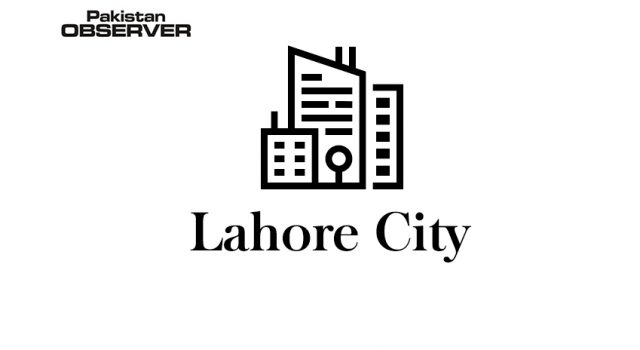By Wazarat Ali
With a huge seafront, large Exclusive Economic Zone (EEZ) and continental shelf; Pakistan is blessed with abundant marine resource potential for innovation and economic growth. It is believed that Pakistan’s maritime zones are rich in living and non-living resources.
However, sea blindness, little to no public-private partnership, dearth of marine research and development (R&D) and absence of a coherent policy are some of the most important causes of underutilization of marine resources.
The need of the hour is to invest in marine R&D while generating opportunities for public-private partnership to fuel blue economy in Pakistan.
The term ‘blue economy’ refers to the utilization of sea and its resources for sustainable development.
In other words, blue economy is efficient use of ocean resources for sustained economic growth, inclusive employment opportunities, and better livelihood for coastal communities and exploitation of sea-based energy reserves.
Seas are increasingly being understood as engines for sustainable economic growth by Small Island Developing States (SIDS) and Big Oceans States alike.
Since time immemorial, humans have been relying on oceans for food, transportation and therapeutic products.
Today there is a better understanding even of the non-market goods and services related to oceans.
Pakistan’s maritime potential is wide and varied. The country’s 1001 kilometers long coast extends southeast and westward.
The maritime area of Pakistan comprises of 240,000 square kilometers of EEZ. To this area, the extended continental shelf provides another 50,000 square kilometers.
The combined area of roughly 290,000 square kilometers has an enormous natural resource potential, much of which remains unexplored.
Most of the marine natural resources are untapped, overexploited or else shrinking on account of pollution,
Pakistan’s coastal zones, a mixture of subtropical environment and riverine flow in Indus delta are rich in bio-productivity and bio-diversity.
These deltaic systems of streams provide for breeding ground of commercially important fisheries including crab and shrimps with a potential resource worth US $ 68 million a year.
Although Pakistan’s fish export is growing but when compared to other Asian countries, the numbers are only depressing.
Moreover, despite huge potential, fishing sector contribute little (1 percent) to Pakistan’s GDP.
However, if developed for optimum exploitation, fishery sector can play pivotal role in development of rural coastal economy of the country besides creating jobs in related sectors such as processing, preserving, transporting and marketing fish and fish products.
Pakistan’s maritime zones are also rich in non-living resources such as sea-based industrial resource, deep-sea minerals and hydrocarbons.
It is important to note that offshore regions of Pakistan have thick marine sedimentary reservoir rocks with potential traps of industrial chemicals and hydrocarbons.
In addition, Pakistan’s marine geological environment is favorable for the formation of mineral resources.
Nonetheless, sea blindness and lack of resources to invest in the maritime infrastructure are major reasons for the absence of any serious exploratory efforts and subsequent discovery.
Pakistan’s energy-starved economy and balance of payment crisis can be cured or at least mitigated in the longer run if untapped non-living resources of sea are exploited. Coastal tourism is yet another fast expanding economic sector in the world.
Pakistan is blessed to have a long coastline with pristine beaches and year-long sunshine which potentially make beach tourism an attractive industry in the country.
Development of sea-based recreational facilities such as quality beaches, theme parks, promenades and hotels is an avenue of public-private partnership to boost tourism and related industries while creating job opportunities for the unemployed youth.
Desalination of water; utilization of tidal and wind energy for power generation; ship construction, maintenance and repair are other areas of high potential for growth of country’s economy.
Marine R&D and capacity building through encouragement of private start-ups can lead the dwindling economy of the country towards stability and progress.
Chinese investment through China Pakistan Economic Corridor (CPEC) is a golden opportunity for Pakistan to explore its “blue” options. CPEC is connecting Pakistan’s port cities to the other parts of countries through a modern network of rails and roads.
This transportation network can facilitate easy and efficient movement of services, goods and human resource within the country besides connecting western China with Arabian Sea.
Pakistan can capitalize on ever-increasing maritime cooperation between the two countries in order to promote “blue partnership” and can lead the country to the path of economic prosperity.
Last year was declared as the year of blue economy by the government to encourage exploration of economic potential of oceans in the country.
Pakistan Navy has been dedicatedly pursuing the commitment to play its part in the growth of blue economy and maritime sector of Pakistan.
Development of comprehensive strategy to incentivize maritime sector through inter-ministerial coordination and broader consultation with stakeholders is required to prompt investment by private sector.
In this way, the economic slowdown can be transformed into sustainable economic activity in the country.
The writer is a freelance writer.










